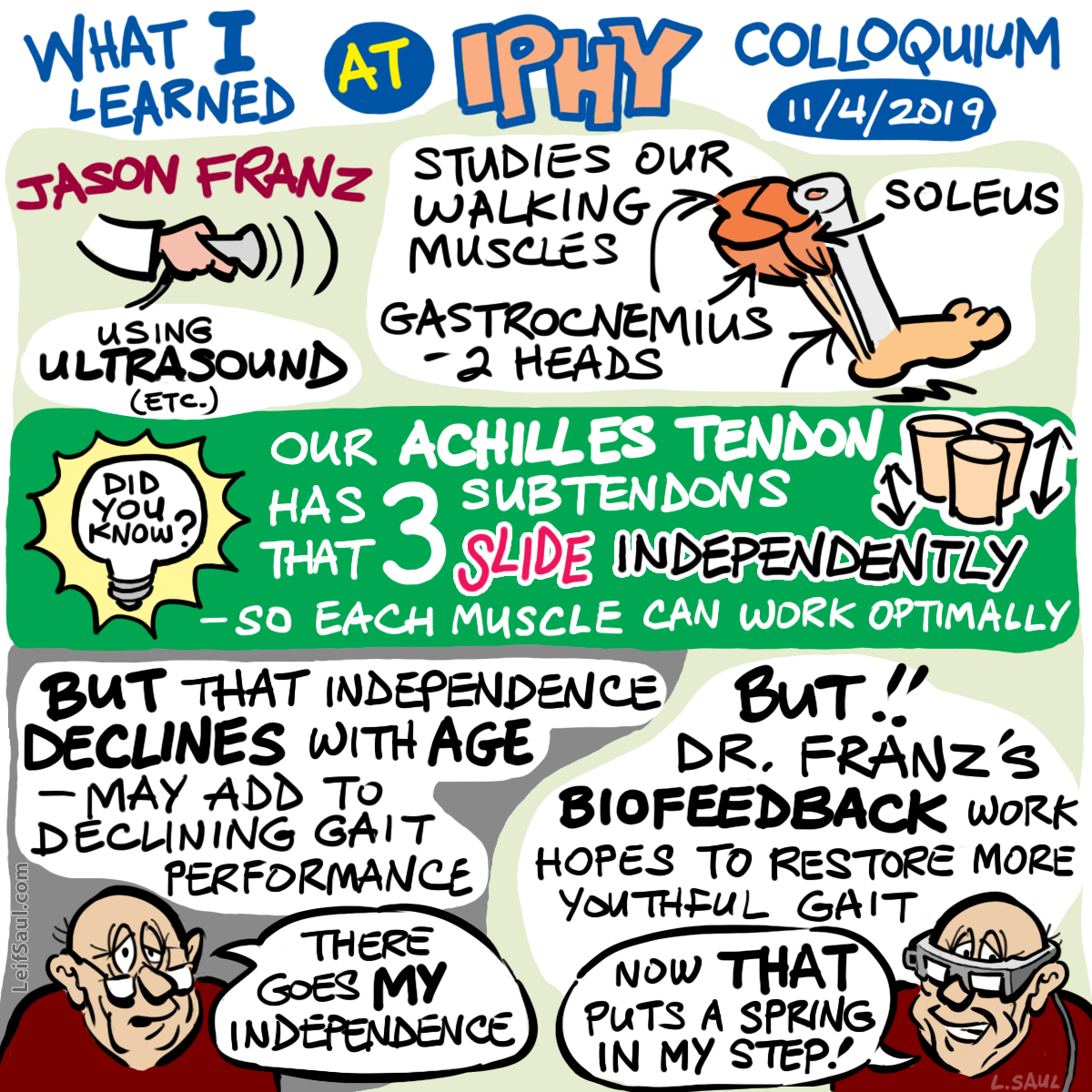
Your calf muscles are attached to your heel by a tendon — the Achilles tendon. What you might not know (nor did I) is that each of your major calf muscles — the soleus, and the two heads (divisions) of the gastrocnemius — exerts force through its own subtendon within the Achilles tendon. These three subtendons (six including both legs) can slide past each other, which allows each muscle to work independently. That’s good news for walking performance, because each muscle is free to “do its own thing” without having to remain in “lock step” with the others. Unfortunately, as we age, adhesions form among the subtendons, reducing their independence, and walking performance is reduced.
In his talk, Dr. Franz explained the problem and then introduced his laboratory’s current work on biofeedback techniques (using sensors on the calf muscles and, yes, a futuristic pair of glasses) which holds the promise of restoring some of that youthful gait performance, and thus, a longer period of independent living into advanced age.
The title of his talk was “Mechanics, Energetics, and Stability: Modifiable Factors to Preserve Independent Mobility in Old Age”. Dr. Franz directs the Applied Biomechanics Laboratory at the Joint Department of Biomedical Engineering, University of North Carolina at Chapel Hill and North Carolina State University. The talk was presented at the weekly Colloquium at the Integrative Physiology (IPHY) Department at CU Boulder.
